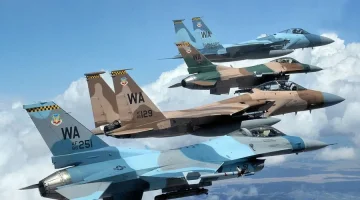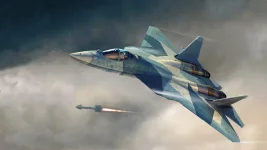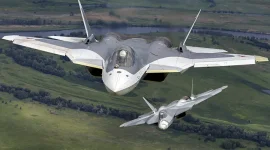- Views: 1K
- Replies: 11
In a significant move to bolster its national security, India’s Strategic Forces Command (SFC) is advancing a project to develop and deploy a new generation of missile warning satellites.
Sources confirm that this initiative aims to create a robust early warning system against advanced missile threats, particularly from China and Pakistan, thereby strengthening India's nuclear deterrence capabilities.
These satellites are planned for placement in a high geosynchronous orbit (GEO), approximately 35,400 kilometres above the Earth, to provide constant surveillance.
The push for this advanced space-based defence architecture comes in response to an increasingly complex regional security environment.
The SFC, which is responsible for the operational command of India’s nuclear weapons, is looking to counter the deployment of sophisticated weapon systems such as China’s DF-17 hypersonic glide vehicles and Pakistan’s Fatah-II guided rocket systems.
By securing its own dedicated missile detection assets, India aims to ensure it can preemptively identify and track any hostile launches, a cornerstone of a credible defence posture.
Established in 2003, the SFC manages India’s strategic assets, including the land-based Agni-V and submarine-launched K-4 ballistic missiles.
Recognizing the critical need for space-based intelligence, the command is reportedly seeking full operational control over these new satellites.
To achieve this, the SFC has initiated discussions with the Indian Space Research Organisation (ISRO) as well as private sector firms like Pixxel and GalaxEye, promoting indigenous development in line with the nation's 'Atmanirbhar Bharat' (self-reliant India) policy.
The proposed satellites will be equipped with state-of-the-art technology, including powerful infrared sensors and synthetic aperture radar (SAR). This will enable them to detect the intense heat signature of a missile launch and track its trajectory, even at night or through heavy cloud cover.
Operating from a geosynchronous orbit provides a significant advantage over satellites in low Earth orbit (LEO), as GEO satellites remain fixed over a specific region, offering persistent, real-time monitoring of the entire Indo-Pacific.
This capability is vital for tracking hypersonic weapons, which travel at over five times the speed of sound and can manoeuvre unpredictably, making them difficult to intercept.
The urgency of this initiative was highlighted by former ISRO chief S. Somanath in June 2025, who stated that India requires "hundreds of satellites" to effectively counter hypersonic threats.
Currently, there is a strategic gap, with China having already deployed over 100 reconnaissance satellites, such as its Yaogan series.
To close this deficit, India’s Chief of Defence Staff, General Anil Chauhan, has announced a goal of deploying a constellation of 50 to 52 military satellites by 2030, with missile warning being a primary objective.
This enhanced surveillance capability is crucial for India’s Ballistic Missile Defence (BMD) system, which includes interceptors designed to destroy incoming missiles.
Timely and accurate data from the new satellites would provide the BMD's AD-1 and AD-2 interceptors with the critical early warning needed to engage and neutralise threats.
Furthermore, this system directly supports India’s "no-first-use" nuclear policy, which relies on having an assured and powerful second-strike capability to deter any potential aggressor.
However, the project faces considerable technical and organisational challenges.
Developing high-resolution sensors for use from such a high orbit, creating long-duration propulsion systems, and ensuring robust cybersecurity against anti-satellite (ASAT) weapons are significant hurdles.
On the organisational front, a clear command and control structure must be established.
A dedicated military space doctrine, anticipated by late 2025, is expected to define the SFC's authority over these critical national security assets, streamlining their command from the existing structure shared by various defence and space agencies.





